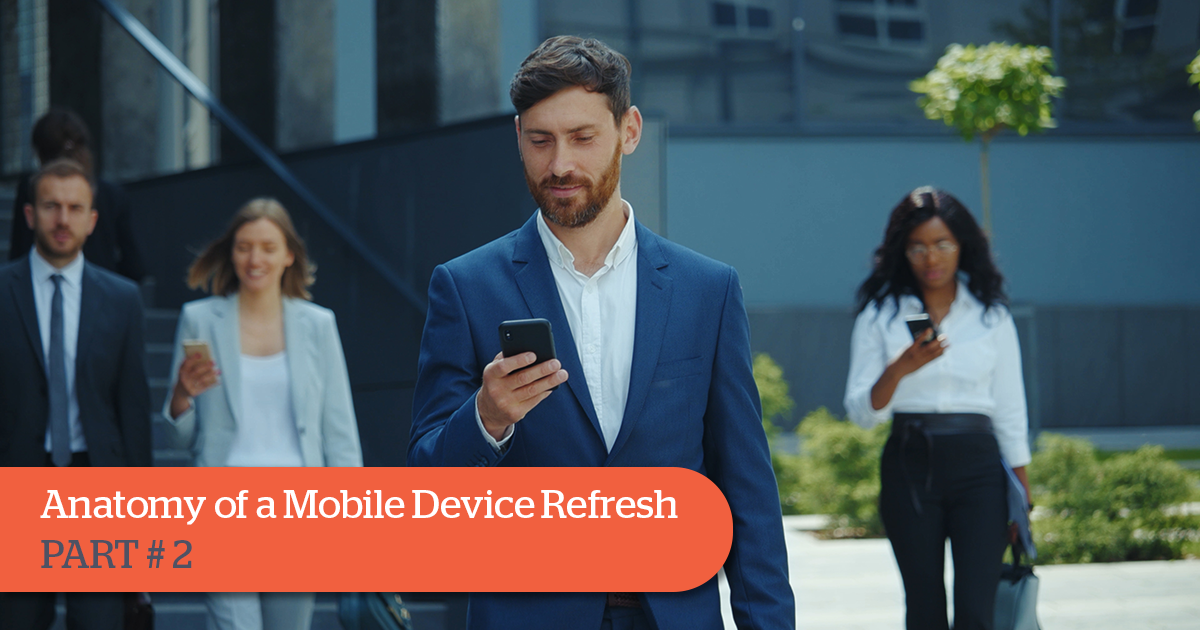
Not long ago, certainly prior to the time of COVID-19, the great majority of knowledge workers had a traditional relationship with their office tech. The workstation provided by the company remained at the office when they left for the day after standard 9-to-5 office hours. Many had company owned and managed mobile devices, others took advantage of BYOD.
The Process
With the dawn of the hybrid work world, taking advantage of the latest tech to support productivity at home, on the road, in a café, or at a hot desk now takes centre stage. So, when it comes to the mobile device refresh cycle, how do you manage this process when employees aren't in the office?
As your last mobile device refresh may have been during the pandemic, before you embark on your upcoming mobile device refresh, it’s important to know how many devices you have, what models and operating systems they are running, how old they are, what condition they are in, and where they are. It’s important to identify any devices that are no longer meeting your security or performance standards because the manufacturer’s support is soon to expire. If you’re using an MDM system, it’s simple to gather and review this data.
One of the most enjoyable steps in a mobile device refresh is the selection of devices. With the challenges of a dispersed workforce and hybrid workers, there is a staggering range of modern and scalable solutions to meet a variety of needs. So, you need to evaluate the brands and models available against your strict criteria, otherwise it will be difficult to appraise a Microsoft Surface Pro 9 with 5G against a Samsung Galaxy Tab Active4 Pro or an Apple iPad (10th gen). Likewise, weighing up the benefits of a Samsung Galaxy S21 FE 5G over a Samsung Galaxy Z Flip4, or an Apple iPhone 14 Pro Max or another variant of Apple iPhone 14 is impossible without setting out your key requirements.
Once you’ve made your decision on iOS or Android, or both and chosen the specific models, you now need to determine who gets what in your organisation depending on their roles and requirements and consider the best way to order and pay for the devices. We’ll cover the pros and cons of buying the devices outright or opting to lease the devices in our next blog in this series.
Of course, the upside of the relatively short lifecycle of a mobile fleet means that they are likely to retain a higher percentage of their original value than other office tech. Many can be refurbished and resold or recycled for their precious parts which imei can manage for you. This value can be used to offset the cost of the new fleet when it comes to covering activities like collection and data sanitation of the old devices.
imei can help
If you’re ready for a mobile fleet refresh and need an experienced team to manage it all for you, please get in touch with the team at imei. With more than twenty years in enterprise mobility, we can help you successfully navigate a mobile device refresh with our managed service enabling you with fully provisioned, best-in-class, ready-to-use devices.
>Get in touch




